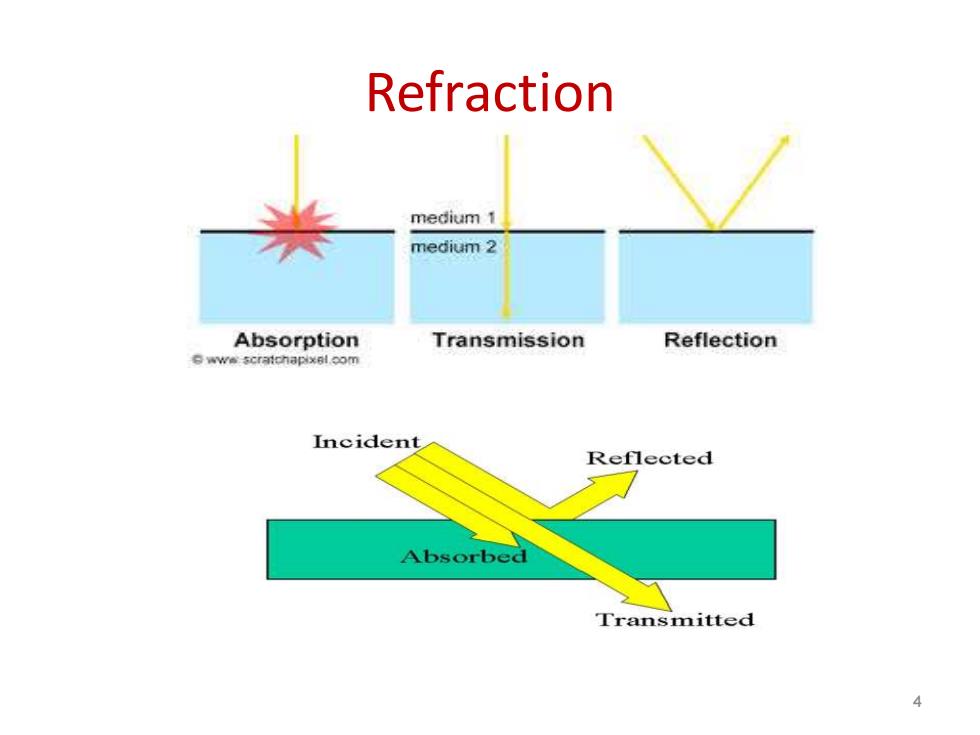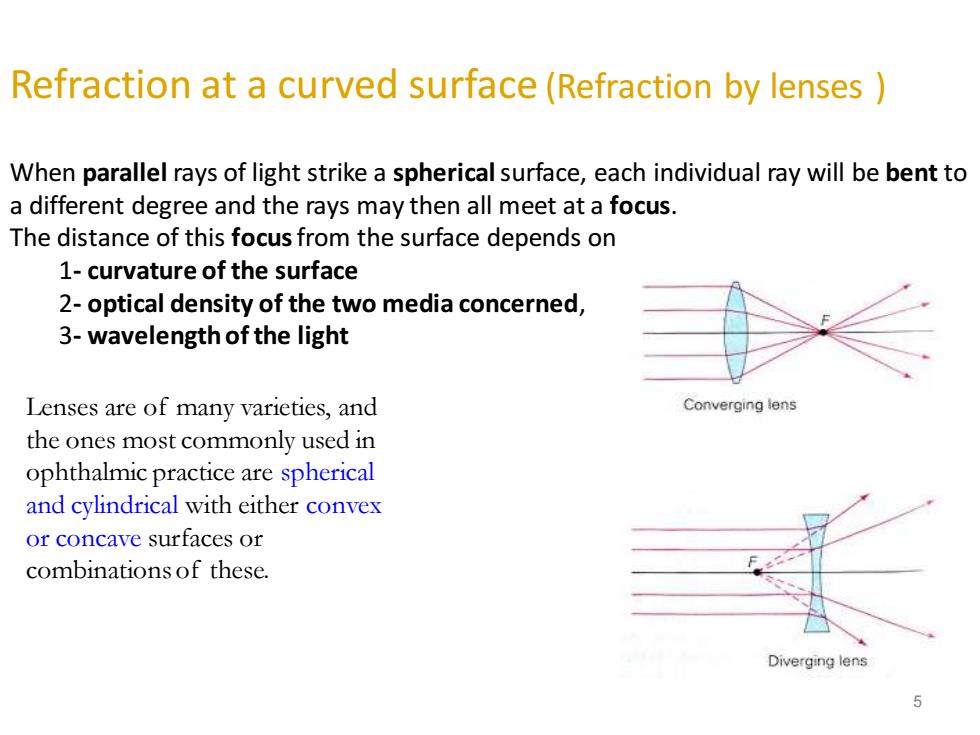
Our eye as a camera Refraction,errors and solutions. Improving Your ®uality of Vision Dr.JUN ZOU Shanghai Tenth People's Hospital Dr.Ali.A.Tagi MB.Ch.B/D.O/CABM(ophth) Fifth year students 1
Our eye as a camera Refraction, errors and solutions. Dr. JUN ZOU Shanghai Tenth People's Hospital Dr.Ali.A.Taqi MB.Ch.B/D.O/CABM(ophth) Fifth year students. 1

Introduction and background The Light Is that part of the electro-magnetic spectrum to which the human eye is sensitive i.e.the visible part of the electro-magnetic spectrum. It's wavelength range is 400-760 nm. Gamma Ultraviolet Infrared Rays X-Rays Rays Rays Radar Shortwave AM 1x10141x1012 1x108 1×10 1x102 1x102 1x10 Wavelength(in meters) Visible Light 4x10-7 5x10-7 6x10-2 7x107 Wavelength(in meters) High Energy Low Energy
Introduction and background The Light • Is that part of the electro-magnetic spectrum to which the human eye is sensitive i.e. the visible part of the electro-magnetic spectrum. • It’s wavelength range is 400-760 nm. 2

Light 人 light travels through space in straight lines. If a ray of light meets a body in its passage through space,one of three things may happen to it: 1-Absorbtion:opaque materials for example black bodies,absorb the light which falls on them; 2-Reflection;materials such as mirror surfaces,reflect the light backwards; 3-Transmition:transparent materials such as glass,transmit the light;a considerable proportion of it,allowing to pass through them but it's direction will be changed (Refraction). Many substances combine these effects to some degree. In space,light maintains a constant speed of about 186 000 miles per second, but as it travels through the substance of such a transparent body,it will encounter more resistance,this retards its progress. When a beam of light strikes a glass plate with parallel sides,it is retarded while traversing the plate,and then travels on unaffected. 3
Light ➢ light travels through space in straight lines. ➢ If a ray of light meets a body in its passage through space, one of three things may happen to it: 1-Absorbtion: opaque materials for example black bodies, absorb the light which falls on them; 2-Reflection; materials such as mirror surfaces, reflectthe light backwards; 3-Transmition : transparent materials such as glass, transmitthe light; a considerable proportion of it, allowing to pass through them but it’s direction will be changed (Refraction). Many substances combine these effects to some degree. 3 In space, light maintains a constant speed of about 186 000 miles per second, but as it travels through the substance of such a transparent body , it will encounter more resistance , this retards its progress. When a beam of light strikes a glass plate with parallel sides, it is retarded while traversing the plate, and then travels on unaffected

Refraction medium 1 medium 2 Absorption Transmission Reflection ewwe scratchapixel.com Incident Reflected Absorbed Transmitted
Refraction 4

Refraction at a curved surface(Refraction by lenses When parallel rays of light strike a spherical surface,each individual ray will be bent to a different degree and the rays may then all meet at a focus. The distance of this focus from the surface depends on 1-curvature of the surface 2-optical density of the two media concerned, 3-wavelength of the light Lenses are of many varieties,and Converging lens the ones most commonly used in ophthalmic practice are spherical and cylindrical with either convex or concave surfaces or combinations of these. Diverging lens 5
Refraction at a curved surface (Refraction by lenses ) When parallel rays of light strike a sphericalsurface, each individual ray will be bent to a different degree and the rays may then all meet at a focus. The distance of this focusfrom the surface depends on 1- curvature of the surface 2- optical density of the two media concerned, 3- wavelength of the light 5 Lenses are of many varieties, and the ones most commonly used in ophthalmic practice are spherical and cylindrical with either convex or concave surfaces or combinations of these